Discover a healthy twist on the classic Japanese Gyudon: tender slices of beef and onions simmered in a savory-sweet sauce, served over steamed cauliflower rice. It’s a quick and healthy weeknight meal!
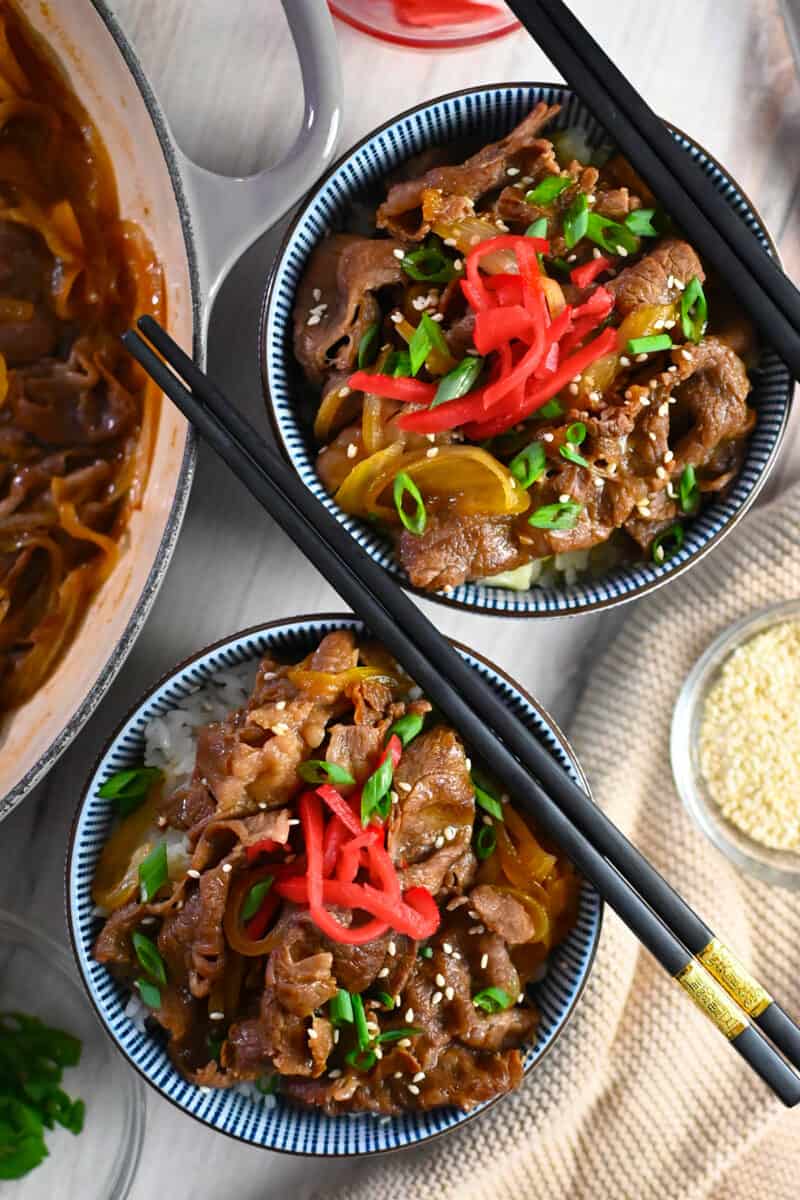
Table of Contents
What is gyudon?
Gyudon, a.k.a. Japanese beef and rice bowl, is a classic Japanese comfort food dish that consists of thinly sliced beef and onions simmered in an umami-packed sauce made with soy sauce, mirin, sake, dashi, and sugar. Many Americans were first introduced to this dish by the popular fast food chain, Yoshinoya. In fact, the Japanese word gyudon (gyu is Japanese for beef and don is a type of porcelain bowl) was coined by the founder of Yoshinoya, Eikichi Matsuda.
Because the beef and onions cook so quickly, this beloved dish can be on the table in just a few minutes, making it a weeknight favorite for home cooks. Gyudon is normally served with steamed white rice to sop up the flavorful sauce.
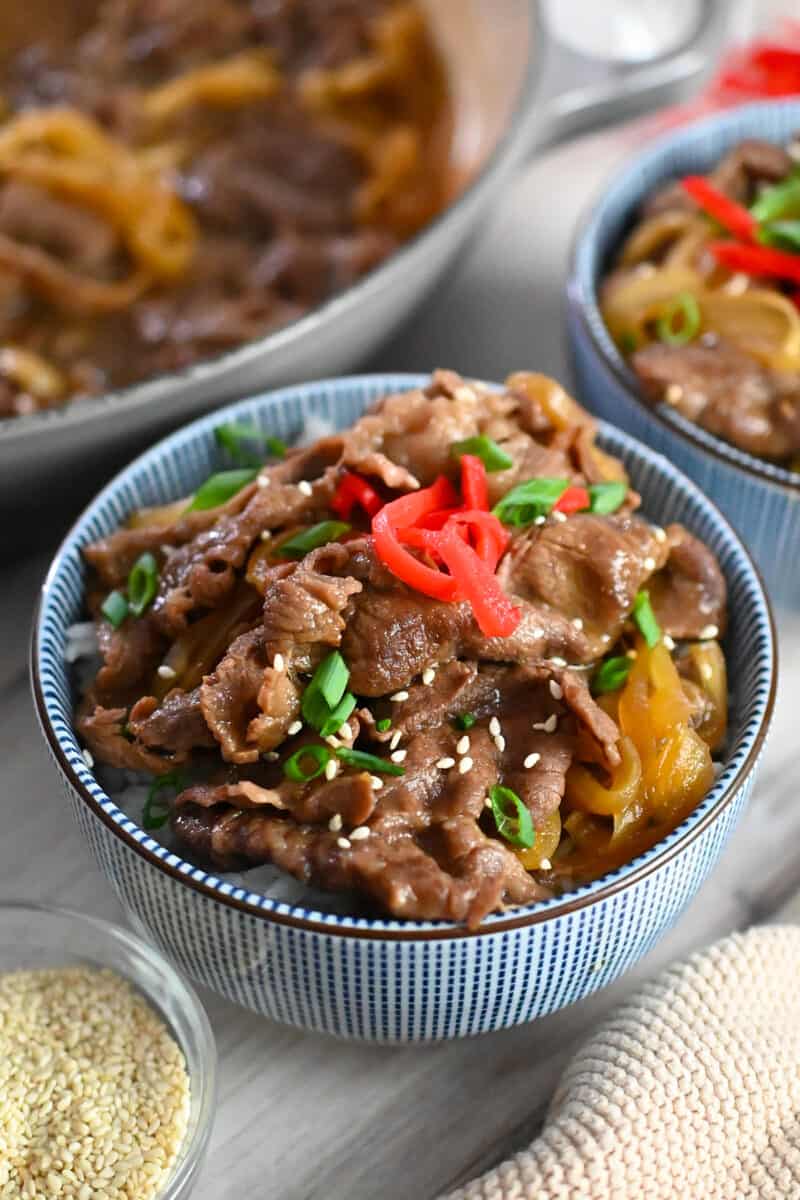
A gluten free, Whole30, and low carb gyudon!
I love Japanese food, but I rarely eat it when I dine out because the gluten in the soy sauce can do a number on me. Undeterred, I’ve come up with paleo versions of my favorite Japanese dishes, like Tsukune (Japanese Chicken Meatballs), Chawanmushi (Savory Egg Custard), Beef and Enoki Mushroom Rolls, and California Hand Rolls.
What made this task easier was the invention of my All-Purpose Stir-Fry Sauce a few years ago. I knew that the flavor profile of my All-Purpose Stir-Fry Sauce could be used in numerous recipes to mimic lots of Asian sauces. Not surprisingly, my sauce works perfectly in this gyudon copycat recipe, too—and as a result, this gyudon recipe is gluten free, Whole30-compatible, soy free, low carb, and oh-so-delicious! I’ve said it a million times before, but I named it All-Purpose Stir-Fry Sauce for a reason—it literally works for ALL PURPOSES!—so make sure you always have a jar in the refrigerator.
One quick note: to keep this gyudon recipe paleo and low carb, serve the beef, onions, and sauce on top of a steaming bowl of cauliflower rice, rather than the traditional white rice.
Tips on how to make the best soy-free gyudon
- Head to your neighborhood Asian market and buy pre-sliced beef! I buy pre-sliced ribeye or chuck for shabu shabu (hot pot) or sukiyaki. The thin slices are pretty large, so I cut them in half crosswise for this recipe. You can also thinly slice the beef yourself—freeze it until it is semi-solid and cut thin slices against the grain. You can also ask your neighborhood butcher to slice the beef like they would for cheesesteak sandwiches.
- Make sure the beef is well-marbled and super thin. The meat cooks quickly so you need a fatty cut for flavor and thin slices so the beef doesn’t get too chewy.
- Don’t skimp on the sauce ingredients! The traditional sauce ingredients are already replaced with my All-Purpose Stir-Fry Sauce, so don’t change anything else up! The reason this paleo gyudon still tastes like the real thing is the sauce, people! Also, to keep things paleo, make sure you make a traditional dashi broth with just kombu and bonito flakes or use a compatible chicken broth. Instant dashi is almost always not Whole30-compatible.
- Go nuts with the garnishes! The beef, onion, and sauce taste fantastic on a bed of cauliflower rice—but sprinkling on some scallions, sesame seeds, spicy shichimi togarashi, and/or sour and spicy red pickled ginger takes this humble dish to another level!
Can you add an egg?
Definitely! Although I didn’t include an egg in this recipe, you can definitely serve gyudon with a poached egg or stir in a raw egg yolk at the end. It’s an easy way to add extra protein to the dish.
Ingredients
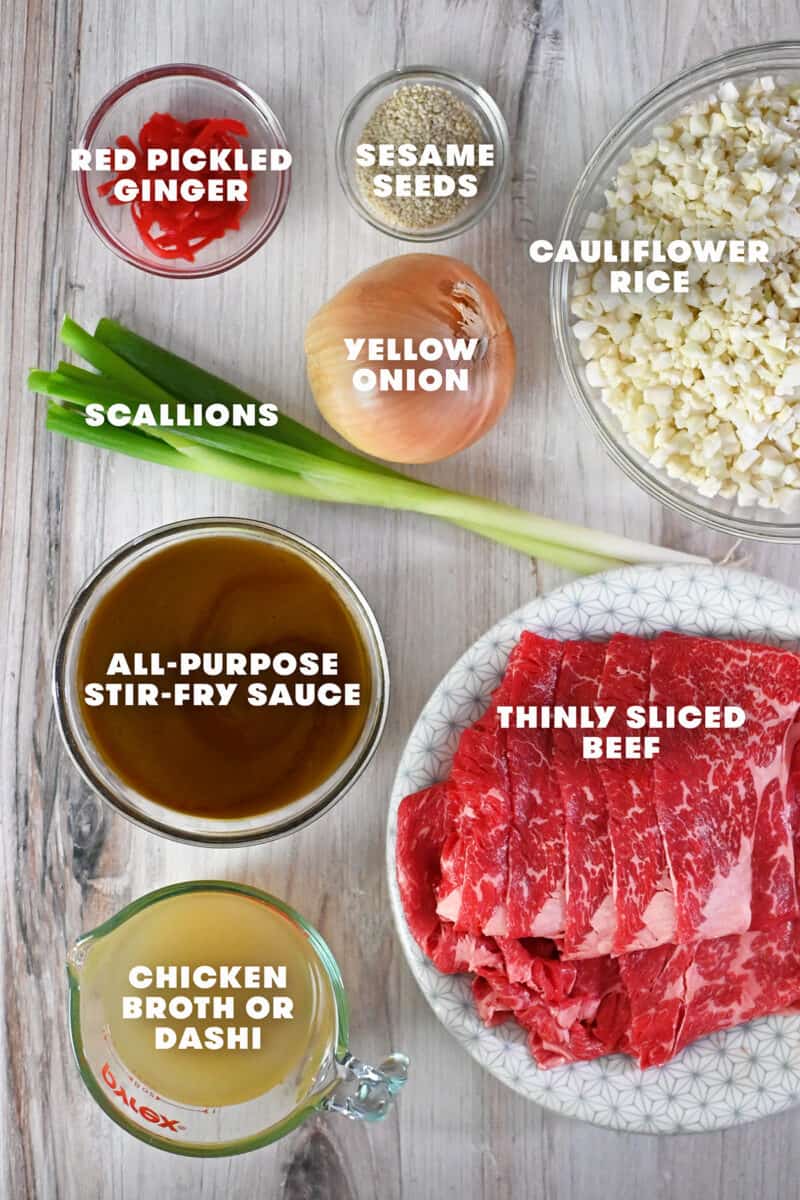
- Thinly sliced beef: Buying pre-sliced beef at an Asian market makes this dish fast and easy.
- Onion: An ordinary yellow onion works great in this dish, adding sweetness and a slight crunch.
- All-Purpose Stir-Fry Sauce: This magical sauce works perfectly as a gluten-free and Whole30 substitute! Check out this post for other dishes to use it in!
- Dashi or chicken broth: To keep this dish Whole30 compatible, make your own dashi. Alternatively, use chicken broth—I often do because I don’t always have bonito flakes and kombu in my pantry.
- Cauliflower rice: I know it’s not the same as white rice, but it’s a pretty good low carb substitute!
- Scallions / green onions: Adds a fresh and bright touch of green to this otherwise brown dish.
- Toasted sesame seeds (optional garnish): Adds nuttiness and crunch!
- Shichimi togarashi (optional garnish): Gives a pop of heat and crunch to the gyudon.
- Pickled red ginger (beni shoga or kizami beni shoga) (optional garnish): The pickled ginger adds tang and spiciness to counteract the richness of the dish. Most store-bought pickled red ginger is not Whole30, but here is a compatible recipe you can make at home.
How to make gyudon
Grab the thinly sliced beef and use a sharp knife to cut it in half if the slices are overly large.
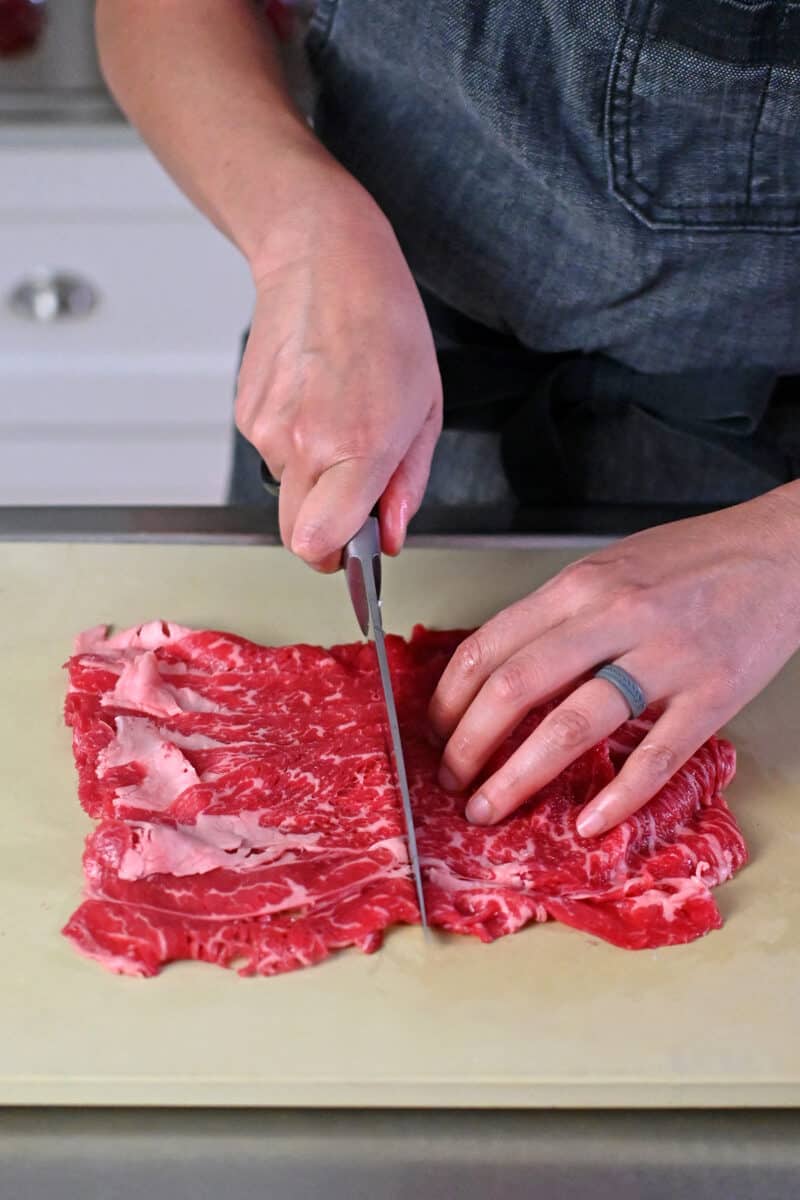
Trim the stem and root ends off of the onion and peel off the dry outer layers. Cut the onion in half, through the poles of the onion, and then thinly slice the onion.
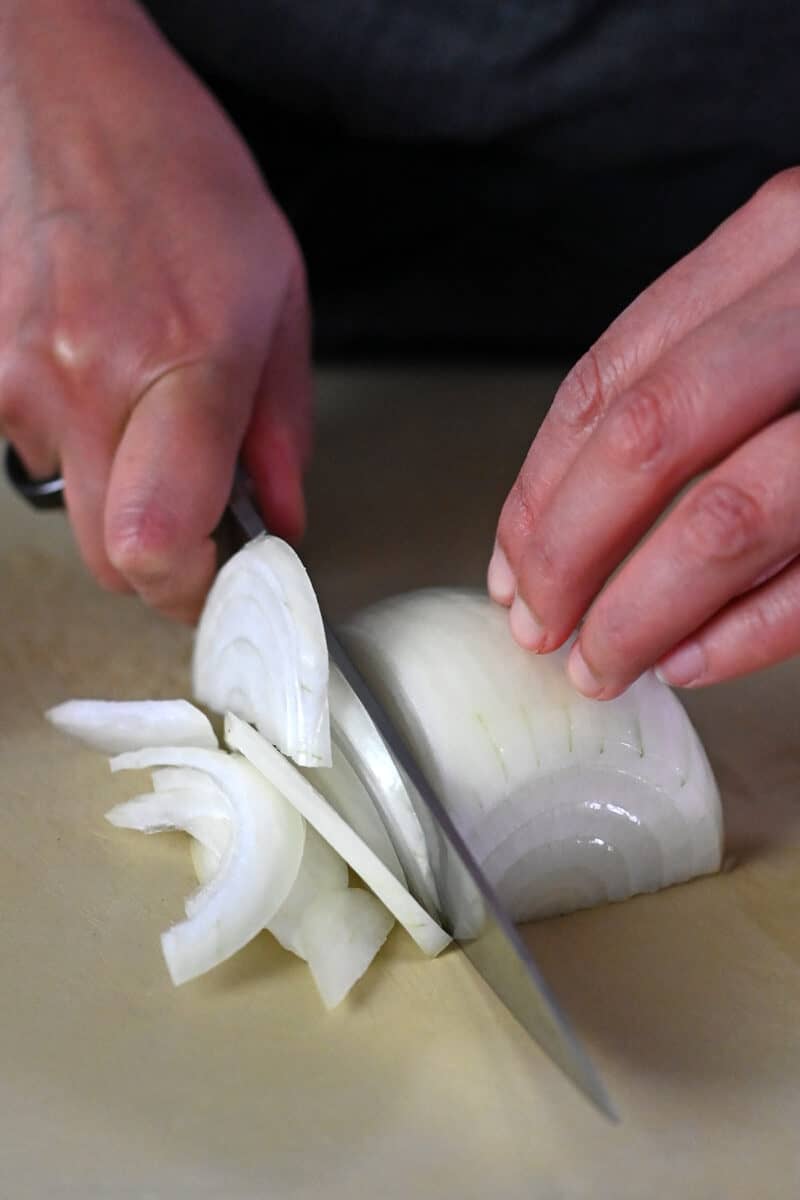
Pour the All-Purpose Stir-Fry Sauce and dashi or chicken broth in a large skillet. Separate the onion slices into half-rings and arrange them in a single layer in the skillet.
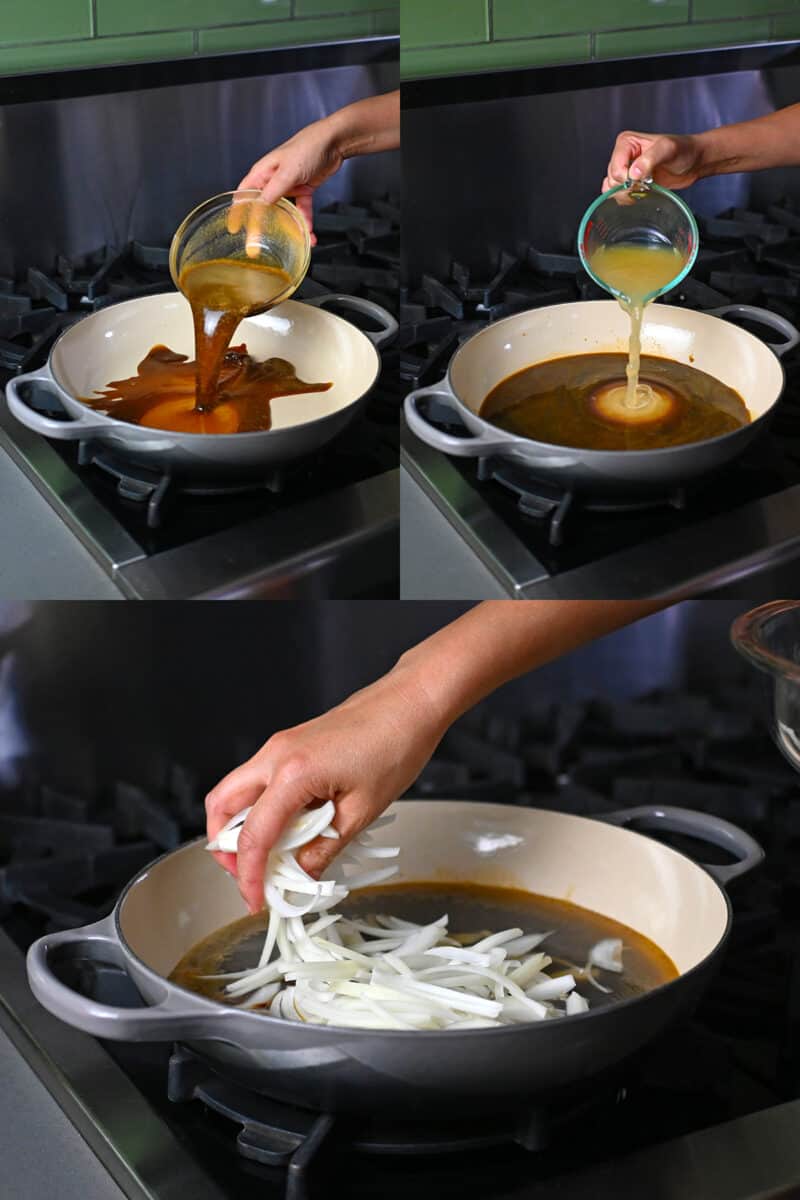
Turn the heat to medium high and bring the sauce to a simmer.
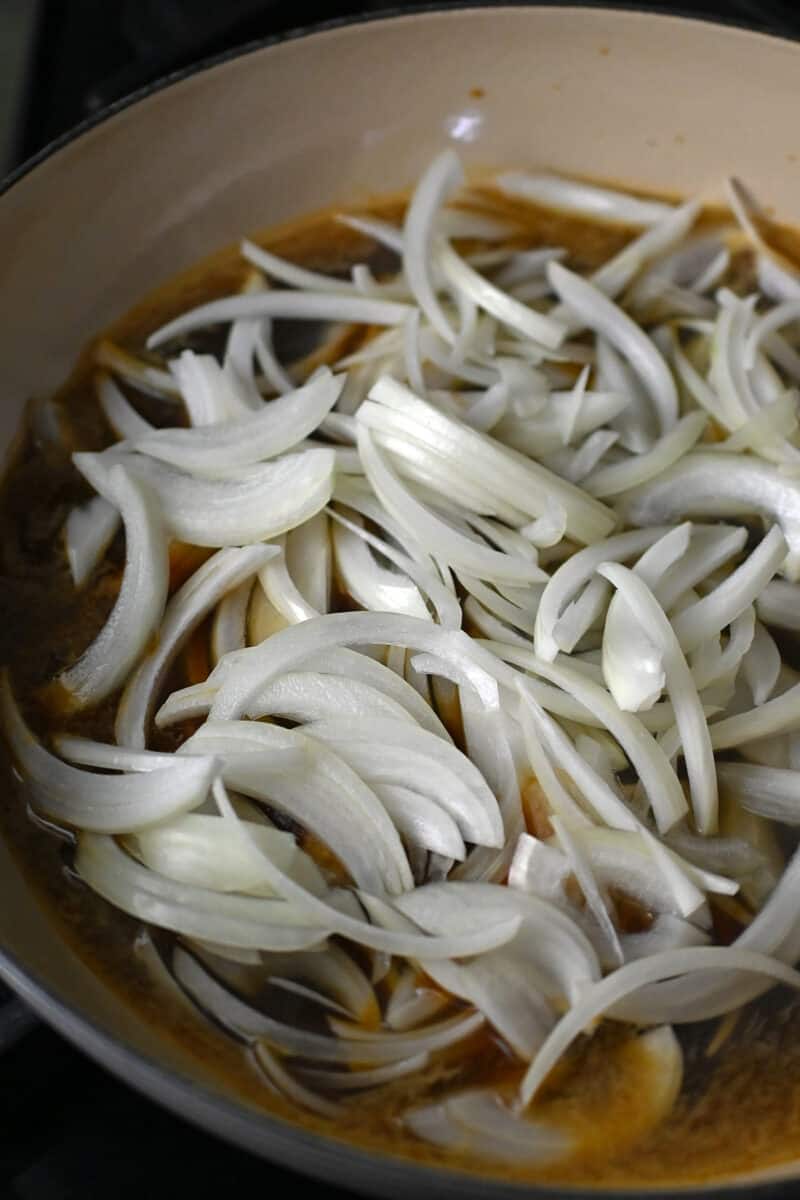
Then, lower it to medium heat to maintain a simmer and cook the onions until mostly tender, about 5 minutes.
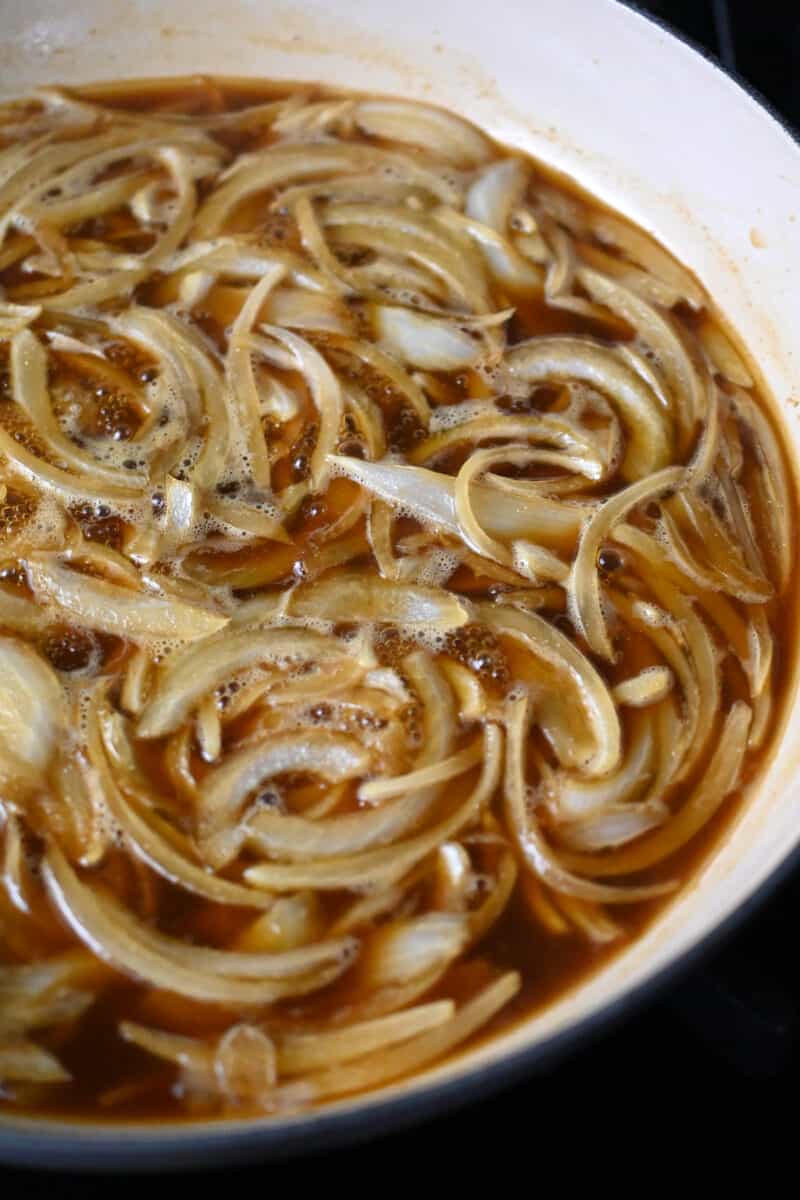
Add the beef and continue simmering the sauce, stirring occasionally.
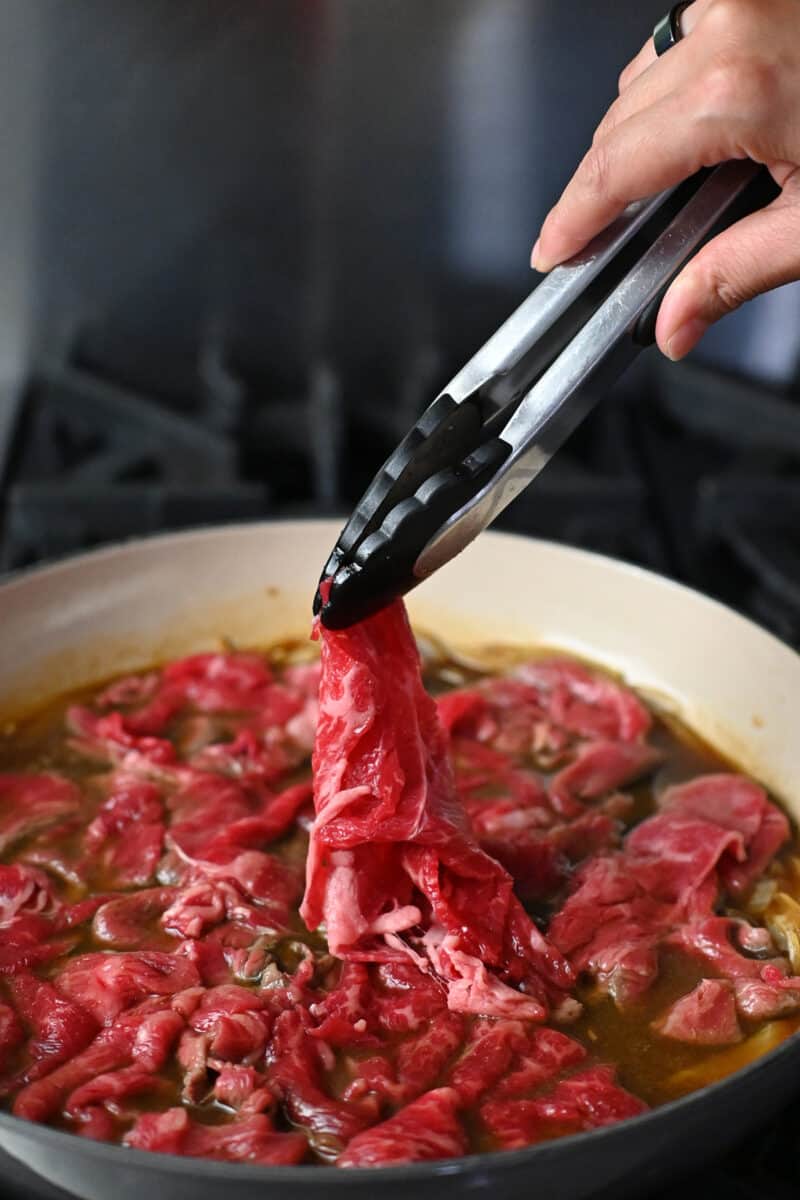
When the beef is no longer pink, take the skillet off the heat.
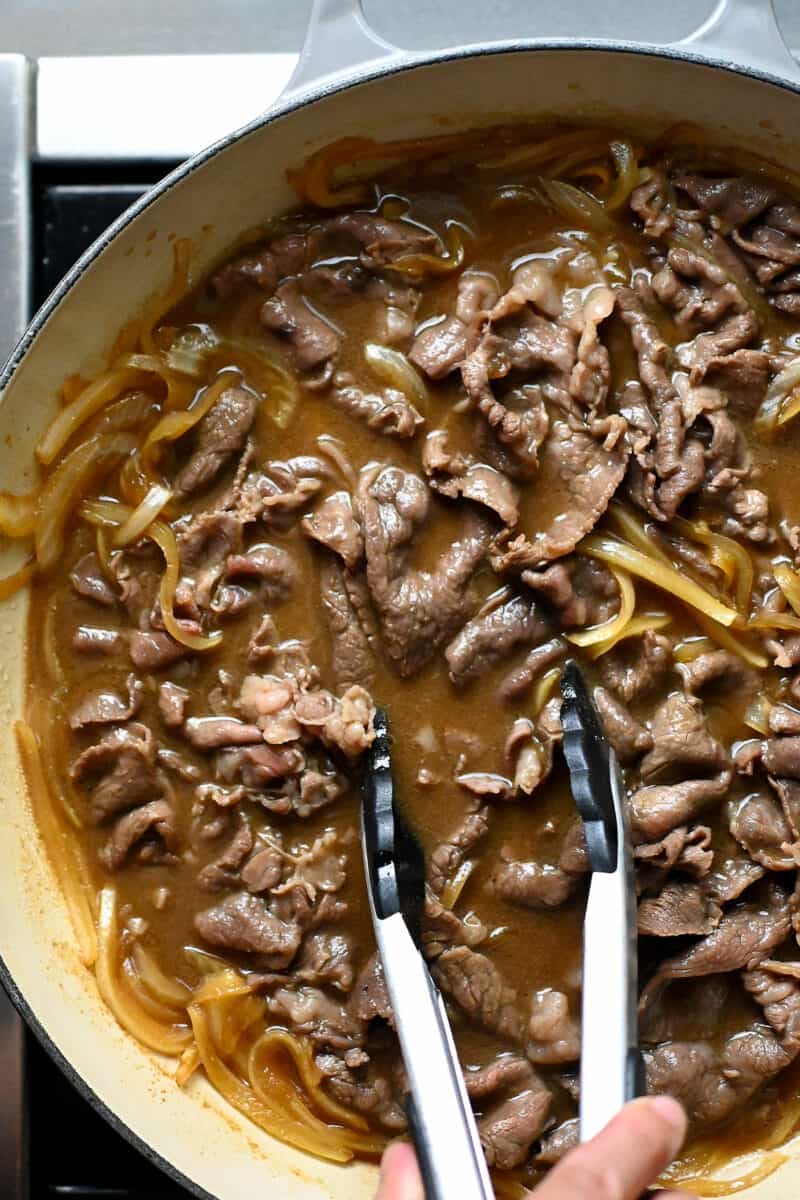
Scoop some cauliflower rice (or white rice) into individual bowls and ladle some beef, onions, and sauce on top. Sprinkle on some scallions, sesame seeds, togarashi, and pickled red ginger if desired!
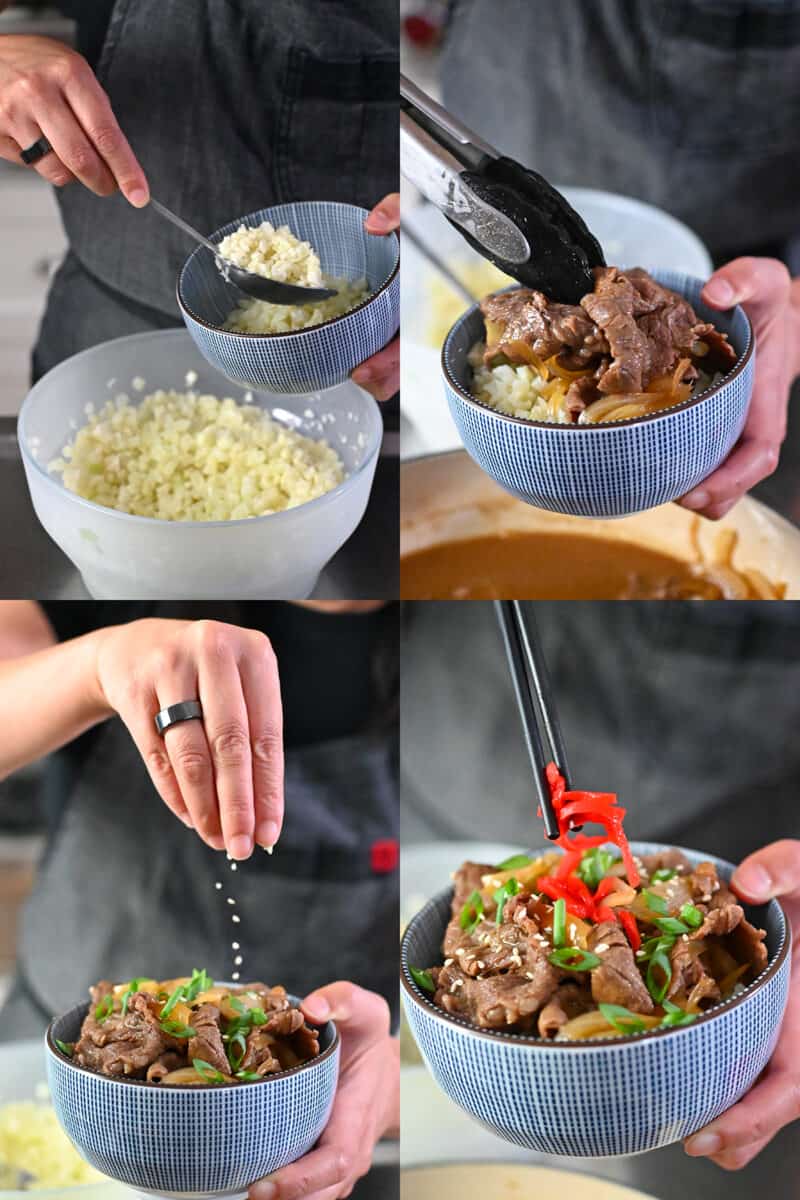
Enjoy!
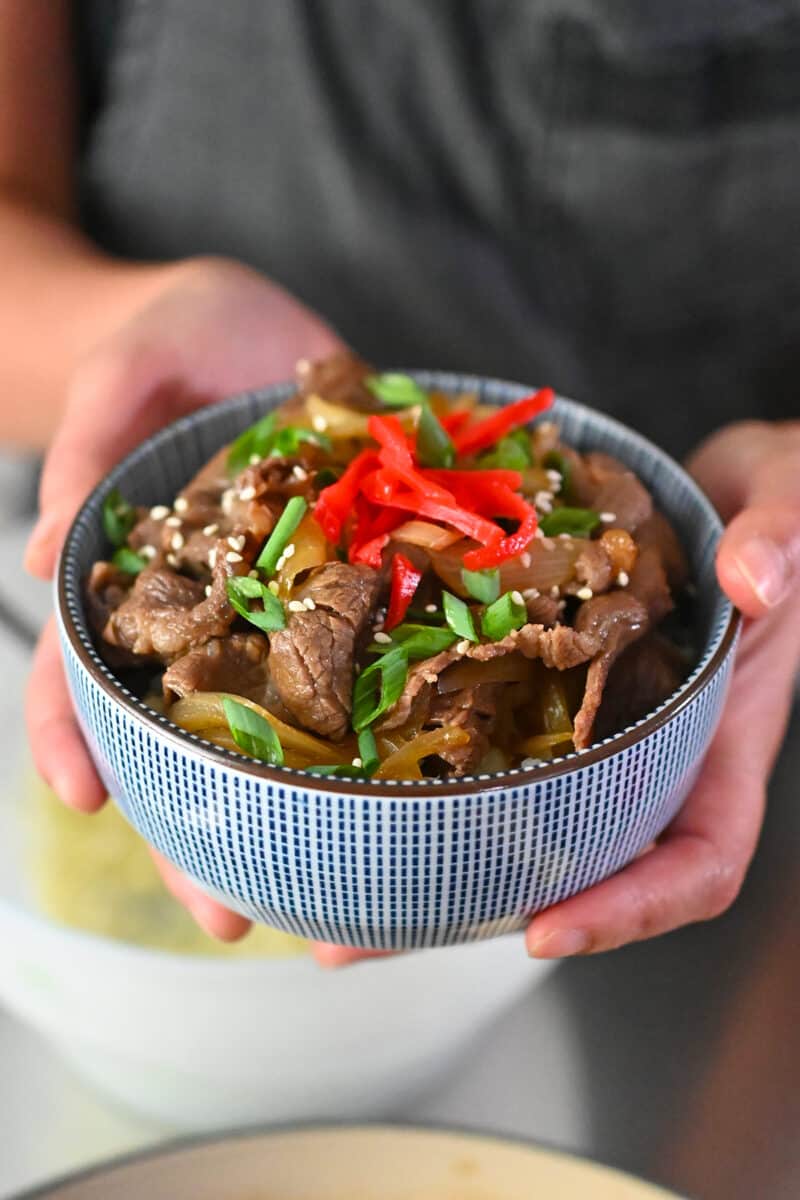
How to save leftovers
Leftover gyudon can be stored in the fridge in a sealed container for up to 4 days or kept in the freezer for up to 2 months.
Looking for more recipe ideas? Head on over to my Recipe Index. You’ll also find exclusive recipes in my cookbooks, Nom Nom Paleo: Food for Humans (Andrews McMeel Publishing 2013), Ready or Not! (Andrews McMeel Publishing 2017), and Nom Nom Paleo: Let’s Go! (Andrews McMeel Publishing 2022).
PRINTER-FRIENDLY RECIPE CARD
Gyudon (Japanese Beef Bowl)
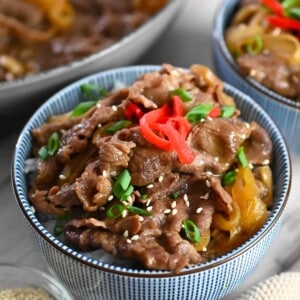
Ingredients
- 1 pound thinly sliced beef chuck or ribeye sold for sukiyaki or shabu shabu are best
- 1 large yellow onion
- 1 cup All Purpose Stir Fry Sauce
- 1 cup dashi or chicken broth
- 1 pound cauliflower rice cooked
- 2 scallions thinly sliced
- toasted sesame seeds optional garnish
- shichimi togarashi optional garnish
- pickled red ginger optional garnish
Instructions
- Grab the thinly sliced beef and use a sharp knife to cut it in half if the slices are overly large.
- Trim the stem and root ends off of the onion and peel off the dry outer layers. Cut the onion in half, through the poles of the onion, and then thinly slice the onion.
- Pour the All-Purpose Stir-Fry Sauce and dashi or chicken broth in a large skillet. Separate the onion slices into half-rings and arrange them in a single layer in the skillet.
- Turn the heat to medium high and bring the sauce to a simmer. Then, lower it to medium heat to maintain a simmer and cook the onions until mostly tender, about 5 minutes.
- Add the beef and continue simmering the sauce, stirring occasionally. When the beef is no longer pink, about 3 to 5 minutes later, take the skillet off the heat.
- Scoop some cauliflower rice (or white rice) into individual bowls and ladle some beef, onions, and sauce on top. Sprinkle on some scallions, sesame seeds, togarashi, and pickled red ginger if desired!
Video
Notes
- Head to your neighborhood Asian market and buy pre-sliced beef! I buy pre-sliced ribeye or chuck for shabu shabu (hot pot) or sukiyaki. The thin slices are pretty large, so I cut them in half crosswise for this recipe. You can also thinly slice the beef yourself—freeze it until it is semi-solid and cut thin slices against the grain. You can also ask your neighborhood butcher to slice the beef like they would for cheesesteak sandwiches.
- Make sure the beef is well-marbled and super thin. The meat cooks quickly so you need a fatty cut for flavor and thin slices so the beef doesn’t get too chewy.
- Don’t skimp on the sauce ingredients! The traditional sauce ingredients are already replaced with my All-Purpose Stir-Fry Sauce, so don’t change anything else up! The reason this paleo gyudon still tastes like the real thing is the sauce, people! Also, to keep things paleo, make sure you make a traditional dashi broth with just kombu and bonito flakes or use a compatible chicken broth. Instant dashi is almost always not Whole30-compatible.
- Go nuts with the garnishes! The beef, onion, and sauce taste fantastic on a bed of cauliflower rice—but sprinkling on some scallions, sesame seeds, spicy shichimi togarashi, and/or sour and spicy red pickled ginger takes this humble dish to another level!
Nutrition
Nutrition information is automatically calculated, so should only be used as an approximation.

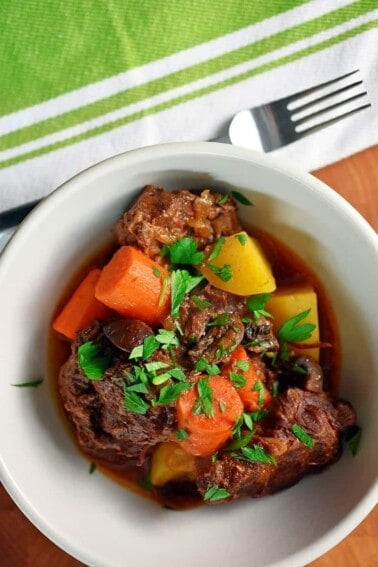
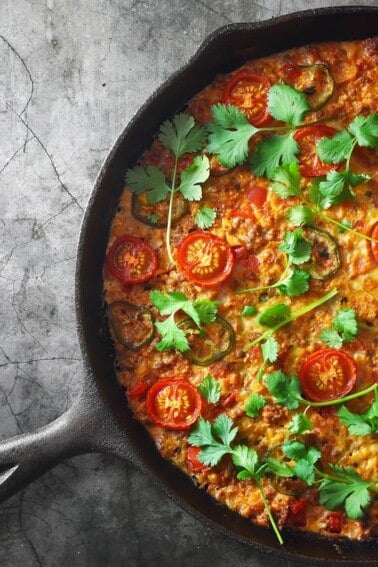
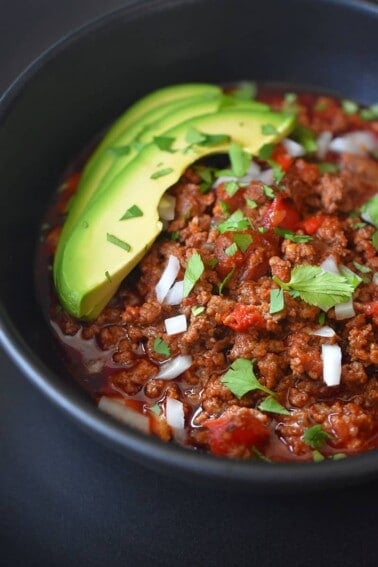
I just made a London broil and have a lot left over. Obviously it wouldn’t be as flavorful as if I cooked it in the delicious sauce, but I might try that … it sounds so amazing!
Made this for dinner last night and served it with a quick-pickled ginger and it was SO good!!
I made this tonight and it was so good. My daughter said this has to be on the rotation a lot! And thank you for the suggestion to get the beef at the Asian market. That made life so easy.
Easy-to-make and delicious!
My family loved it. I did two onions and increased the sauce to 1.5x
Did the fried egg with the pickled ginger. Served it with a Korean Cucumber salad on the side.
So fast and easy to make. Served 4 of us with the Ribeye beef from the Korean Market.